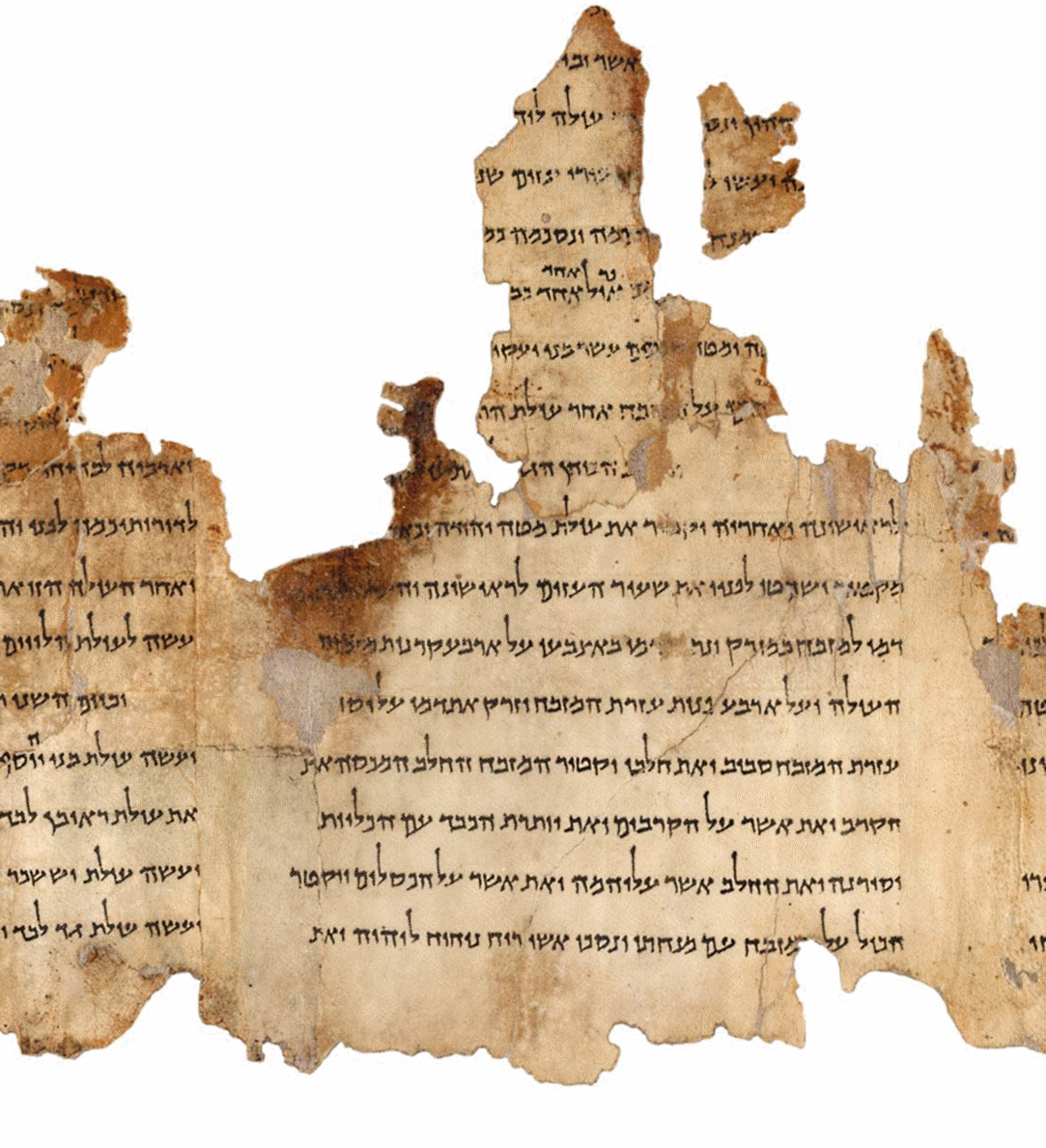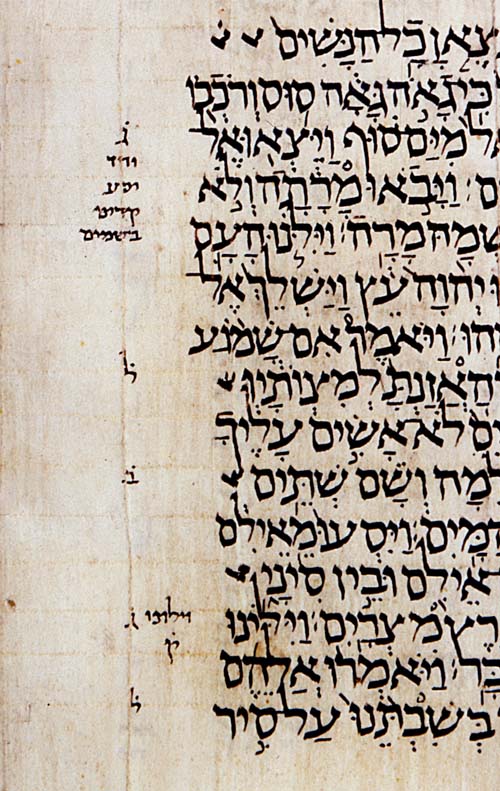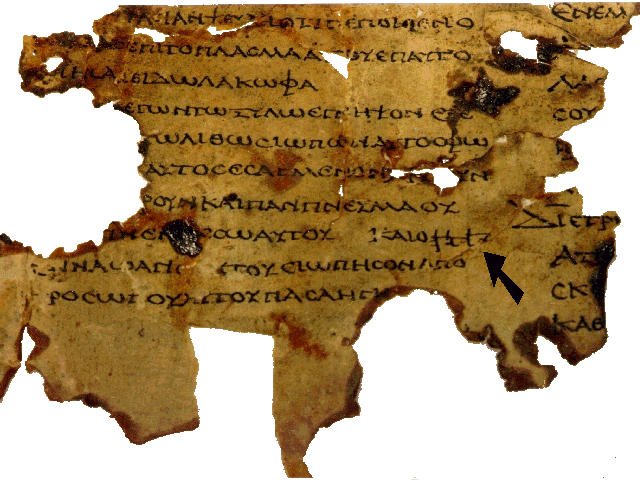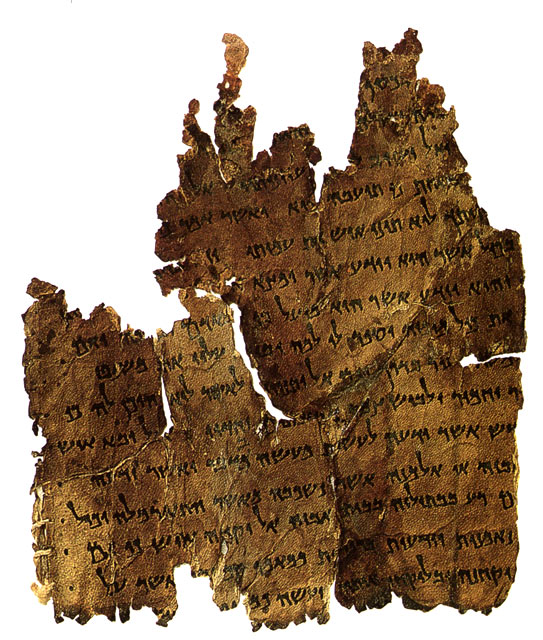|
List Of Manuscripts From Qumran Cave 6
The following is a list of the Dead Sea Scrolls from the The Qumran Caves, cave 6 near Qumran. Description Wadi Qumran Cave 6 was discovered alongside Cave 5 in 1952, shortly after the discovery of Cave 4. Cave 6 contained fragments of about 31 manuscripts.VanderKam, James C., ''The Dead Sea Scrolls Today'', Grand Rapids: Eerdmans, 1994. pp. 10–11.Garcia Martinez, Florentino and Tigchelaar, Eibert. ''The Dead Sea Scrolls Study Edition''. Vol. 1. 1999.Fritzmyer, Joseph. ''A Guide to the Dead Sea Scrolls and Related Literature''. 2008. List of manuscripts Some resources for more complete information on the Dead Sea Scrolls are the book by Emanuel Tov, "Revised Lists of the Texts from the Judaean Desert" for a complete list of all of the Dead Sea Scroll texts, as well as the online webpages for the Shrine of the Book and the Leon Levy Collection, both of which present photographs and images of the scrolls and fragments themselves for closer study. Information is not always ... [...More Info...] [...Related Items...] OR: [Wikipedia] [Google] [Baidu] |
Temple Scroll
The Temple Scroll ( he, מגילת המקדש) is the longest of the Dead Sea Scrolls. Among the discoveries at Qumran it is designated: 11QTemple Scrolla (11Q19 1QTa. It describes a Jewish temple, along with extensive detailed regulations about sacrifices and temple practices. The document is written in the form of a revelation from God to Moses, thereby with the intended meaning that this is the more appropriate temple which was revealed to Moses, and that Moses' instructions were either forgotten or ignored when Solomon built the First Temple in Jerusalem. In other words, in the mind of the Scroll writer, "Solomon should actually have built the First Temple as it is described here in the Temple Scroll". Introduction The Temple Scroll is written in Hebrew in the square Herodian script of the late Second Temple Period, and comprises 65 columns (19 pieces of leather) and is 9 metres in length.Johann Maier, ''The Temple Scroll'' (Sheffield: JSOT Press upplement 341985), p. 1. ... [...More Info...] [...Related Items...] OR: [Wikipedia] [Google] [Baidu] |
Psalm 78
Psalm 78 is the 78th psalm in the biblical Book of Psalms. It is one of the 12 Psalms of Asaph and is described as a "maskil" or "contemplation". It is the second-longest Psalm, with 72 verses (Psalm 119 has 176 verses), and the first of the three great history psalms (the others being Psalms 105 and 106). The New American Bible, Revised Edition entitles it "a new beginning in Zion and David". In the slightly different numbering system used in the Greek Septuagint and Latin Vulgate translations of the Bible, this psalm is Psalm 77. Uses Judaism *This psalm is recited on the third through sixth days of Passover in some traditions. *Verse 36-37 are found in the Foundation of Repentance recited on the eve of Rosh Hashanah. *Verse 38 (''V'hu Rachum'') is the first verse of a paragraph by the same name in Pesukei Dezimra, is the seventeenth verse of Yehi Kivod in Pesukei Dezimra, is the opening verse of the long Tachanun recited on Mondays and Thursdays, is found in Uva Letzion, ... [...More Info...] [...Related Items...] OR: [Wikipedia] [Google] [Baidu] |
Israel Antiquities Authority
The Israel Antiquities Authority (IAA, he, רשות העתיקות ; ar, داﺌرة الآثار, before 1990, the Israel Department of Antiquities) is an independent Israeli governmental authority responsible for enforcing the 1978 Law of Antiquities. The IAA regulates excavation and conservation, and promotes research. The Director-General is Mr. Eli Escusido, and its offices are housed in the Rockefeller Museum. The Israel Antiquities Authority plans to move into a new building for the National Campus for the Archaeology of Israel in Jerusalem, next to the Israel Museum. History The Israel Department of Antiquities and Museums (IDAM) of the Ministry of Education was founded on July 26, 1948, after the establishment of the State of Israel. It took over the functions of the Department of Antiquities of the British Mandate in Israel and Palestine. Originally, its activities were based on the British Mandate Department of Antiquities ordinances. IDAM was the statutory aut ... [...More Info...] [...Related Items...] OR: [Wikipedia] [Google] [Baidu] |
List Of Hebrew Bible Manuscripts
A Hebrew Bible manuscript is a handwritten copy of a portion of the text of the Hebrew Bible (Tanakh) made on papyrus, parchment, or paper, and written in the Hebrew language. (Some of the Biblical text and notations may be in Aramaic.) The oldest manuscripts were written in a form of scroll, the medieval manuscripts usually were written in a form of codex. The late manuscripts written after the 9th century use the Masoretic Text. The important manuscripts are associated with Aaron ben Asher (especially Codex Leningradensis). The earliest sources (whether oral or written) of the Hebrew Bible disappeared over time, because of the fragility of media, wars, (especially the destruction of the First and Second Temples), and other intentional destructions. As a result, the lapse of time between the original manuscripts and their surviving copies is much longer than in the case of the New Testament manuscripts. The first list of the Old Testament manuscripts in Hebrew, made by Benjamin ... [...More Info...] [...Related Items...] OR: [Wikipedia] [Google] [Baidu] |
Septuagint Manuscripts
The Septuagint (LXX), the ancient (first centuries BC) Alexandrian translation of Jewish scriptures into Koine Greek exists in various manuscript versions. List of Septuagint manuscripts There are currently over 2000 classified manuscripts of the Septuagint. The first list of Septuagint manuscripts was presented by Holmes and Parsons. Their edition ends with a full list of manuscripts known to them set out in the Annexes. It enumerates 311 codes (marked with Roman numerals I-XIII and Arab 14-311), of which the codes are designated by their siglum I-XIII, 23, 27, 39, 43, 156, 188, 190, 258, 262. The codes marked with Roman numerals signify given letters from A to Z. The list of Septuagint manuscripts according to the classification of Alfred Rahlfs - a list of all known Septuagint manuscripts proposed by Alfred Rahlfs based on census of Holmes and Parsons. Division in classification by Rahlfs The table of Septuagint manuscripts is divided into ten parts: * Part I: A-Z ... [...More Info...] [...Related Items...] OR: [Wikipedia] [Google] [Baidu] |
Biblical Manuscripts
A biblical manuscript is any handwritten copy of a portion of the text of the Bible. Biblical manuscripts vary in size from tiny scrolls containing individual verses of the Jewish scriptures (see ''Tefillin'') to huge polyglot codices (multi-lingual books) containing both the Hebrew Bible (Tanakh) and the New Testament, as well as extracanonical works. The study of biblical manuscripts is important because handwritten copies of books can contain errors. Textual criticism attempts to reconstruct the original text of books, especially those published prior to the invention of the printing press. Hebrew Bible (or Tanakh) manuscripts The Aleppo Codex (c. 920 CE) and Leningrad Codex (c. 1008 CE) were once the oldest known manuscripts of the Tanakh in Hebrew. In 1947, the finding of the Dead Sea scrolls at Qumran pushed the manuscript history of the Tanakh back a millennium from such codices. Before this discovery, the earliest extant manuscripts of the Old Testament were in G ... [...More Info...] [...Related Items...] OR: [Wikipedia] [Google] [Baidu] |
Book Of Proverbs
The Book of Proverbs ( he, מִשְלֵי, , "Proverbs (of Solomon)") is a book in the third section (called Ketuvim) of the Hebrew Bible and a book of the Christian Old Testament. When translated into Greek and Latin, the title took on different forms: in the Greek Septuagint (LXX) it became (, "Proverbs"); in the Latin Vulgate the title was , from which the English name is derived. Proverbs is not merely an anthology but a "collection of collections" relating to a pattern of life which lasted for more than a millennium. It is an example of the biblical wisdom literature, and raises questions of values, moral behaviour, the meaning of human life, and right conduct, and its theological foundation is that "the fear of God (meaning submission to the will of God) is the beginning of wisdom". Wisdom is praised for her role in creation; God acquired her before all else, and through her he gave order to chaos; and since humans have life and prosperity by conforming to the order of cre ... [...More Info...] [...Related Items...] OR: [Wikipedia] [Google] [Baidu] |
Damascus Document
The Damascus Document is an ancient Hebrew text known from both the Cairo Geniza and the Dead Sea Scrolls.Philip R. Davies, "Damascus Document", in Eric M. Meyers (ed.), ''The Oxford Encyclopedia of Archaeology in the Near East'' (Oxford University Press, 1997). It is considered one of the foundational documents of the ancient Jewish community of Qumran. The redactor of the text allows that the covenant is open to all Israelites who accept the sect's halakha, while condemning the others as the "wicked of Judah" against whom God would direct "a great anger with flames of fire by the hand of all the angels of destruction against persons turning aside from the path". The text states that those who abandon the true covenant "will not live". Some scholars suggest serves as a "bridge" document, connecting Judaism's post-exilic 'Enochian'-Essene majority to the asserted leadership of its radical minority Qumran–Essene community that was established in isolation near the shores of the D ... [...More Info...] [...Related Items...] OR: [Wikipedia] [Google] [Baidu] |
Book Of Samuel
The Book of Samuel (, ''Sefer Shmuel'') is a book in the Hebrew Bible, found as two books (1–2 Samuel) in the Old Testament. The book is part of the narrative history of Ancient Israel called the Deuteronomistic history, a series of books (Joshua, Judges, Samuel, and Kings) that constitute a theological history of the Israelites and that aim to explain God's law for Israel under the guidance of the prophets. According to Jewish tradition, the book was written by Samuel, with additions by the prophets Gad and Nathan, who together are three prophets who had appeared within 1 Chronicles during the account of David's reign. Modern scholarly thinking posits that the entire Deuteronomistic history was composed ''circa'' 630–540 BCE by combining a number of independent texts of various ages. The book begins with Samuel's birth and Yahweh's call to him as a boy. The story of the Ark of the Covenant follows. It tells of Israel's oppression by the Philistines, which brought about Sa ... [...More Info...] [...Related Items...] OR: [Wikipedia] [Google] [Baidu] |
Book Of Giants
The ''Book of Giants'' is an apocryphal Jewish book which expands upon the Genesis narrative of the Hebrew Bible, in a similar manner to the Book of Enoch. Together with this latter work, the ''Book of Giants'' "stands as an attempt to explain how it was that wickedness had become so widespread and muscular before the flood; in so doing, it also supplies the reason why God was more than justified in sending that flood." The text's composition has been dated to before the 2nd century BC. The ''Book of Giants'' is an antediluvian (pre-Flood) narrative that was received primarily in Manichaean literature and known at Turfan. However, the earliest known traditions for the book originate in Aramaic copies of a ''Book of Giants'' among the Dead Sea Scrolls. References to the ''Giants'' mythology are found in: Genesis 6:1-4, the books of Enoch (Ethiopic, Slavonic, Hebrew, Greek), Jubilees, Genesis Apocryphon, 2 and 3 Baruch (Slavonic), the Damascus Document, and visions in Daniel 7: ... [...More Info...] [...Related Items...] OR: [Wikipedia] [Google] [Baidu] |
Daniel 8
Daniel 8 is the eighth chapter of the Book of Daniel. It tells of Daniel's vision of a two-horned ram destroyed by a one-horned goat, followed by the history of the "little horn", which is Daniel's code-word for the Greek king Antiochus IV Epiphanes. Although set during the reign or regency of King Belshazzar (who probably died in 539 BCE), the subject of the vision is Antiochus' oppression of the Jewish people during the second century BCE: he outlawed Jewish customs such as circumcision, the Jewish monthly/Lunar calendar, dietary restrictions, and Sabbath observance,Known as Chodesh, Millah, Shabbos made ownership of the Torah scroll a capital offense, and built an altar to Zeus in the Temple (the "abomination of desolation"). His program sparked a popular uprising which led to the retaking of Jerusalem and the Temple by Judas Maccabeus (164 BCE). Summary In the third year of Belshazzar, king of Babylon, Daniel in a vision sees himself in Susa, which is in Elam, in moder ... [...More Info...] [...Related Items...] OR: [Wikipedia] [Google] [Baidu] |




.jpg)

